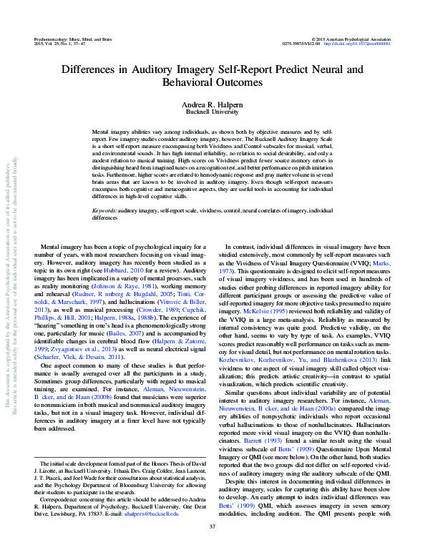
Mental imagery abilities vary among individuals, as shown both by objective measures and by self-report. Few imagery studies consider auditory imagery, however. The Bucknell Auditory Imagery Scale is a short self-report measure encompassing both Vividness and Control subscales for musical, verbal, and environmental sounds. It has high internal reliability, no relation to social desirability, and only a modest relation to musical training. High scores on Vividness predict fewer source memory errors in distinguishing heard from imagined tunes on a recognition test, and better performance on pitch imitation tasks. Furthermore, higher scores are related to hemodynamic response and gray matter volume in several brain areas that are known to be involved in auditory imagery. Even though self-report measures encompass both cognitive and metacognitive aspects, they are useful tools in accounting for individual differences in high-level cognitive skills. (PsycINFO Database Record (c) 2016 APA, all rights reserved)
Available at: http://works.bepress.com/andrea_halpern/70/
